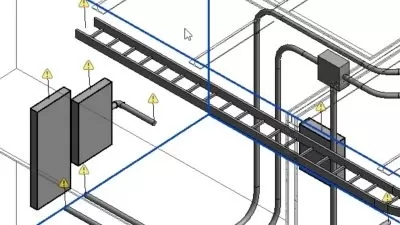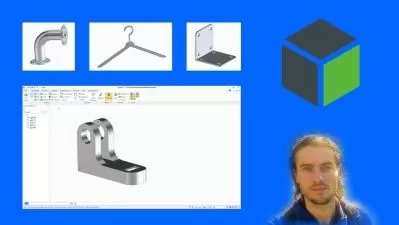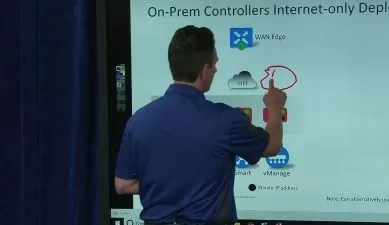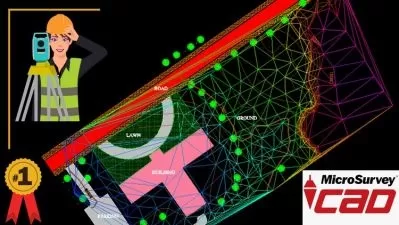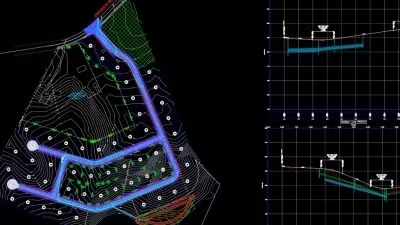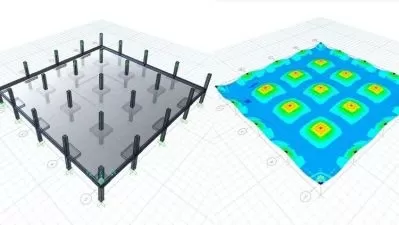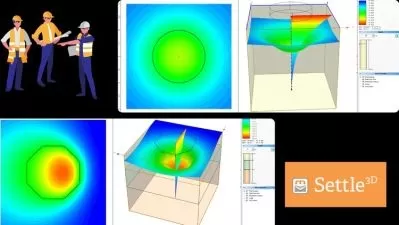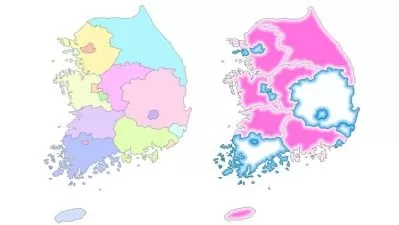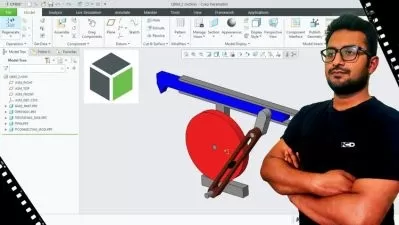CFD of External Aerodynamics and Turbomachinery
Sijal Ahmed
18:03:06
Description
External aerodynamics and turbo-machinery CFD in Ansys Fluent, ICEMCFD, Space Claim & Design Modeler
What You'll Learn?
- Should be able to process geometry in Spaceclaim.
- Import model in ICEMCFD and create high quality tetra-prism mesh with proper resolution.
- Solve and post process problem in Fluent
- Be will be able to solve external aerodynamics using CFD techniques
- Solve turbomachinery CFD
- Understands turbulence modeling, boundary layer and Y+
Who is this for?
What You Need to Know?
More details
DescriptionThis is the most practical type of CFDÂ course available online. This will enhance your CFDÂ skill level from basic to very advanced level.
CFD is the is filed of science to solve fluid dynamics and heat transfer problems using numerical models on computer. With the advent of high end computers, it is now possible to solve these problems with great detail which will help you in preliminary and also in detailed design phase.
This is specially designed course for learning Ansys CFD at professional level . In this course, you will learn how to solve complex engineering problems in fluid dynamics using CFD techniques. You will go through each and every step of CFD simulation from geometry to meshing to solution and processing. You will master the CFD skills on external aerodynamics and turbomachinery in this course.Â
Our main emphasis is on the learning the actual process of CFDÂ simulation. That is to extract important info from the given data, create geometry, clean geometry and create domain around it. This is done in Spaceclaim and design modeler. After that we mesh that geometry with state of the art CFD software such as ICEMCFD. Subsequently that mesh is imported into Fluent or CFX to solve the equations of flow and heat transfer numerically in iterative fashion. You will learn how to setup problem, how to apply most appropriate boundary conditions How to choose best turbulence model, what should be best Y+ value and how to choose and implement in your CFDÂ model. After that you will about solution and solution and data monitoring.
After solution, you will learn how to post process results, how to understand them and most importantly how to compare them with available analytical and/or experimental data. In absence of these two options how to apply best practices to ensure highest possible quality of your CFD analysis.
Latest workshop added in this course is on April 02 2023:Â
"CFD Analysis of Tulip vertical axis wind turbine"
"Building CFD analaysis with atmospheric boundayr layer" April 30, 2023
Who this course is for:
- Engineering and science students/professional who are using CFD for problem solving.
- Undergrad, MS and PhD students who want to apply CFD in their research.
This is the most practical type of CFDÂ course available online. This will enhance your CFDÂ skill level from basic to very advanced level.
CFD is the is filed of science to solve fluid dynamics and heat transfer problems using numerical models on computer. With the advent of high end computers, it is now possible to solve these problems with great detail which will help you in preliminary and also in detailed design phase.
This is specially designed course for learning Ansys CFD at professional level . In this course, you will learn how to solve complex engineering problems in fluid dynamics using CFD techniques. You will go through each and every step of CFD simulation from geometry to meshing to solution and processing. You will master the CFD skills on external aerodynamics and turbomachinery in this course.Â
Our main emphasis is on the learning the actual process of CFDÂ simulation. That is to extract important info from the given data, create geometry, clean geometry and create domain around it. This is done in Spaceclaim and design modeler. After that we mesh that geometry with state of the art CFD software such as ICEMCFD. Subsequently that mesh is imported into Fluent or CFX to solve the equations of flow and heat transfer numerically in iterative fashion. You will learn how to setup problem, how to apply most appropriate boundary conditions How to choose best turbulence model, what should be best Y+ value and how to choose and implement in your CFDÂ model. After that you will about solution and solution and data monitoring.
After solution, you will learn how to post process results, how to understand them and most importantly how to compare them with available analytical and/or experimental data. In absence of these two options how to apply best practices to ensure highest possible quality of your CFD analysis.
Latest workshop added in this course is on April 02 2023:Â
"CFD Analysis of Tulip vertical axis wind turbine"
"Building CFD analaysis with atmospheric boundayr layer" April 30, 2023
Who this course is for:
- Engineering and science students/professional who are using CFD for problem solving.
- Undergrad, MS and PhD students who want to apply CFD in their research.
User Reviews
Rating
Sijal Ahmed
Instructor's Courses
Udemy
View courses Udemy- language english
- Training sessions 137
- duration 18:03:06
- English subtitles has
- Release Date 2023/06/12






